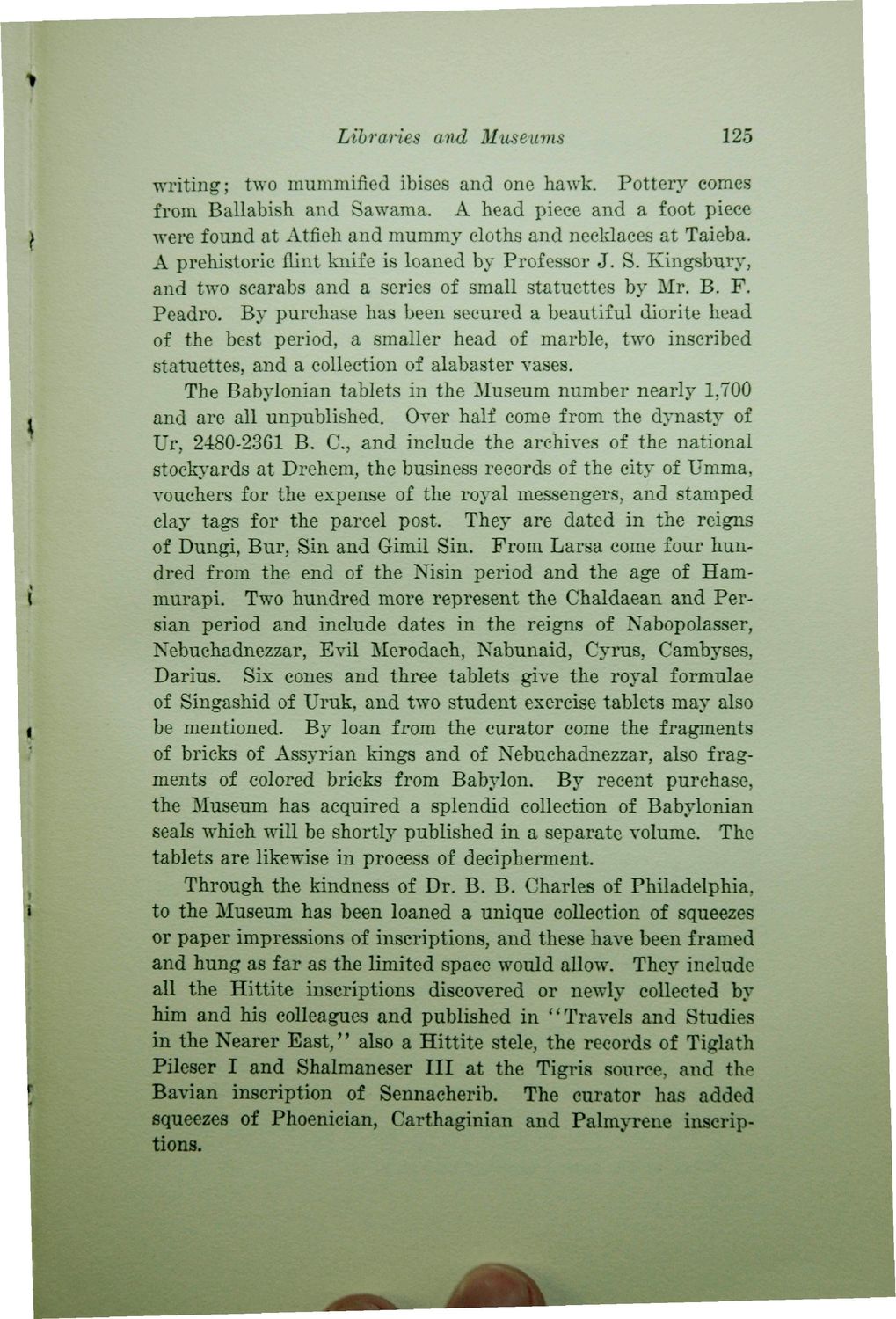| |
| |
Caption: Book - 16 Years (Edmund James)
This is a reduced-resolution page image for fast online browsing.

EXTRACTED TEXT FROM PAGE:
Libraries and Museums 125 writing; two mummified ibises and one hawk. Pottery comes from Ballabish and Sawama. A head piece and a foot piece were found at Atfieh and mummy cloths and necklaces at Taieba. A prehistoric flint knife is loaned by Professor J. S. Kingsbury, and two scarabs and a series of small statuettes by Mr, B. P. Peadro. By purchase has been secured a beautiful diorite head of the best period, a smaller head of marble, two inscribed statuettes, and a collection of alabaster vases. The Babylonian tablets in the Museum number nearly 1,700 and are all unpublished. Over half come from the dynasty of Ur, 2480-2361 B. C., and include the archives of the national stockyards at Drehem, the business records of the city of Umma, vouchers for the expense of the royal messengers, and stamped clay tags for the parcel post. They are dated in the reigns of Dungi, Bur, Sin and Gimil Sin. From Larsa come four hundred from the end of the Nisin period and the age of Hammurapi. Two hundred more represent the Chaldaean and Persian period and inelude dates in the reigns of Nabopolasser, Nebuchadnezzar, Evil Merodach, Nabunaid, Cyrus, Cambyses, Darius. Six cones and three tablets give the royal formulae of Singashid of Uruk, and two student exercise tablets may also be mentioned. By loan from the curator come the fragments of bricks of Assyrian kings and of Nebuchadnezzar, also fragments of colored bricks from Babylon. By recent purchase, the Museum has acquired a splendid collection of Babylonian seals which will be shortly published in a separate volume. The tablets are likewise in process of decipherment. Through the kindness of Dr. B. B. Charles of Philadelphia, to the Museum has been loaned a unique collection of squeezes or paper impressions of inscriptions, and these have been framed and hung as far as the limited space would allow. They include all the Hittite inscriptions discovered or newly collected by him and his colleagues and published in " Travels and Studies in the Nearer E a s t / ' also a Hittite stele, the records of Tiglath Pileser I and Shalmaneser III at the Tigris source, and the Bavian inscription of Sennacherib. The curator has added squeezes of Phoenician, Carthaginian and Palmyrene inscriptions.
| |